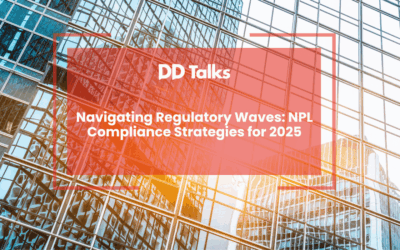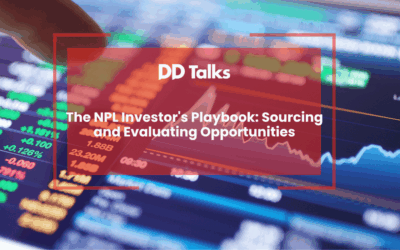Table of Contents
Introduction to Re-Performing Loans and Non-QM Financing
The financial industry is constantly evolving, with innovative lending solutions emerging to address diverse borrower needs. Among these innovations, re-performing loans (RPL) and non-qualified mortgage (Non-QM) financing have gained significant traction in the European debt and equity markets. These instruments offer unique opportunities for investors, lenders, and borrowers alike while addressing gaps left by traditional lending frameworks.
Re-performing loans are a subset of loans that were previously delinquent but have since returned to regular payment schedules. On the other hand, Non-QM financing caters to borrowers who may not meet standard mortgage qualification criteria but demonstrate the ability to repay through alternative means. Together, RPLs and Non-QM loans play a pivotal role in diversifying investment portfolios and improving access to credit for underserved segments.
This comprehensive guide will explore the nuances of RPLs and Non-QM financing, their differences from other loan types, market trends shaping their adoption, and their future potential in the ever-changing lending landscape. For further insights into these topics, visit our detailed analysis at Understanding Re-Performing Loans, Non-QM Financing, and Non-Performing Financing.
What Are Re-Performing Loans (RPL) and How Do They Work?
Re-performing loans (RPLs) refer to loans that were once classified as non-performing due to missed payments or delinquency but have since been brought back into compliance with agreed repayment terms. This recovery typically occurs after borrowers resolve financial challenges or renegotiate loan terms with lenders.
The process often begins with restructuring or modifying the original loan agreement. Lenders may reduce interest rates, extend repayment periods, or offer temporary forbearance to help borrowers regain financial stability. Once consistent payments resume over a defined period—typically three months or more—the loan is reclassified as re-performing.
For investors, RPLs represent an attractive opportunity due to their potential for high yields compared to traditional performing loans. However, they also carry inherent risks tied to the borrower’s past delinquencies. Proper assessment of creditworthiness and payment history is critical when investing in this asset class.
The Key Differences Between Performing, Non-Performing, and Re-Performing Loans
- Performing Loans: These loans are fully compliant with repayment schedules set forth in their agreements. Borrowers make timely payments without any defaults or delinquencies.
- Non-Performing Loans (NPLs): NPLs are loans where borrowers fail to meet payment obligations for an extended period—usually over 90 days—resulting in default status.
- Re-Performing Loans: Sitting between performing and non-performing loans on the spectrum, RPLs are previously delinquent accounts that have resumed consistent repayments after undergoing restructuring or modification.
The key distinction lies in borrower behavior during the loan term: performing loans reflect strong credit health; non-performing loans indicate severe repayment issues; while re-performing loans showcase a recovery trajectory post-delinquency. Each category carries different levels of risk and reward for lenders and investors.
Understanding Non-QM Loans: Definition, Benefits, and Market Trends
A Non-Qualified Mortgage (Non-QM) loan is designed for borrowers who fall outside conventional lending guidelines established by regulatory bodies like the European Central Bank (ECB). Unlike traditional mortgages that rely heavily on income documentation such as W-2 forms or tax returns, Non-QM loans consider alternative income verification methods like bank statements or rental income streams.
The primary benefits include greater flexibility in underwriting standards and expanded access to homeownership for self-employed individuals or those with irregular income patterns. Additionally, Non-QM products often feature competitive interest rates despite catering to higher-risk profiles compared to qualified mortgages.
The market for Non-QM financing has grown steadily over recent years due to increasing demand from niche borrower segments coupled with investor appetite for higher-yield assets. As regulatory scrutiny remains focused on ensuring responsible lending practices within this space, innovation continues driving its adoption across Europe’s real estate sector.
Frequently Asked Questions: Re-Performing Loans and Non-QM Financing
- What are re-performing loans (RPL), and how do they differ from performing or non-performing loans?
- Re-performing loans are previously delinquent loans that have resumed regular payments after restructuring or modification. Unlike performing loans, which are consistently repaid on time, or non-performing loans, which are in default, RPLs represent a recovery phase where borrowers regain compliance with repayment terms.
- Who benefits from investing in re-performing loans?
- Investors benefit from the higher yields typically associated with RPLs compared to traditional performing loans. However, these investments carry risks due to the borrower’s prior delinquencies. Proper credit assessment is crucial for mitigating these risks.
- What makes Non-QM financing different from traditional mortgage lending?
- Non-QM financing caters to borrowers who cannot meet conventional mortgage qualification criteria. These loans use alternative income verification methods, such as bank statements or rental income, offering greater flexibility compared to traditional mortgages that rely heavily on standard documentation like tax returns.
- Why is the demand for Non-QM financing growing in Europe?
- The demand for Non-QM financing is increasing due to its ability to serve niche borrower segments like self-employed individuals and those with irregular income streams. Additionally, investor interest in higher-yield assets has contributed to its steady growth across European real estate markets.
- Are there any risks associated with Non-QM loans?
- Yes, Non-QM loans cater to higher-risk borrower profiles and therefore may involve greater default risks compared to qualified mortgages. However, responsible lending practices and thorough underwriting can help mitigate these risks while expanding access to credit for underserved demographics.




0 Comments